- Home
- Ramachandra Guha
Gandhi
Gandhi Read online
ALSO BY RAMACHANDRA GUHA
History
The Unquiet Woods: Ecological Change and Peasant
Resistance in the Himalaya
Environmentalism: A Global History
The Use and Abuse of Nature (with Madhav Gadgil)
A Corner of a Foreign Field: The Indian History of a British Sport
How Much Should a Person Consume? Thinking Through the Environment
India After Gandhi: The History of the World’s Largest Democracy
Biography
Savaging the Civilized: Verrier Elwin, His Tribals, and India
Gandhi Before India
Essays
An Anthropologist among the Marxists and Other Essays
The Last Liberal and Other Essays
Patriots and Partisans
Democrats and Dissenters
Anthologies
Social Ecology
Nature’s Spokesman: M. Krishnan and Indian Wildlife
The Picador Book of Cricket
Makers of Modern India
THIS IS A BORZOI BOOK
PUBLISHED BY ALFRED A. KNOPF
Copyright © 2018 by Ramachandra Guha
All rights reserved. Published in the United States by Alfred A. Knopf, a division of Penguin Random House LLC, New York. Originally published in hardcover in India by Allen Lane, an imprint of Penguin Random House Ltd., Gurugram, in 2018, and simultaneously published in Great Britain by Allen Lane, an imprint of Penguin Books Ltd., a division of Penguin Random House Ltd., London.
www.aaknopf.com
Knopf, Borzoi Books, and the colophon are registered trademarks of Penguin Random House LLC.
Library of Congress Control Number: 2018953456
ISBN 9780385532310
Ebook ISBN 9780385532327
Cover image: Mahatma Gandhi, ca. 1937. akg-images / GandhiServe India
Cover design by Carol Devine Carson
v5.3.2
a
For Suja
Albert Einstein, writing about Gandhi in 1944:
A leader of his People, unsupported by any outward authority, a politician whose success rests not upon craft nor the mastery of technical devices, but simply on the convincing power of his personality; a victorious fighter who has always scorned the use of force; a man of wisdom and humility, armed with resolve and inflexible consistency, who has devoted all his strength to the uplifting of his people and the betterment of their lot; a man who has confronted the brutality of Europe with the dignity of the simple human being, and thus at all times rises superior.
Generations to come, it may be, will scarce believe that such a one as this even in flesh and blood walked upon this earth.
Lord Willingdon, Viceroy of India, writing about Gandhi in 1933:
It’s a beautiful world if it wasn’t for Gandhi who is really a perfect nuisance….At the bottom of every move he makes which he always says is inspired by God, one discovers the political manoeuvre….I see the American Press is saying what a wonderful man he is in that if he threatens to starve there is a terrible hullaballoo over here. It’s true, but the fact is that we live in the midst of very unpractical, mystical, and superstitious folk who look upon Gandhi as something holy, whereas I look upon him as the biggest humbug alive.
Gandhi, writing about himself in 1934:
I make no hobgoblin of consistency. If I am true to myself from moment to moment, I do not mind all the inconsistencies that may be flung in my face.
Contents
Cover
Also by Ramachandra Guha
Title Page
Copyright
Dedication
Preface
PART I: CLAIMING A NATION (1915–1922)
1. The Returning Hero
2. Coming out in Banaras
3. Three Experiments in Satyagraha
4. Going National
5. The Personal and the Political
6. Capturing the Congress
7. The Rise and Fall of Non-Cooperation
8. The Mahatma from Above and Below
PART II: REACHING OUT TO THE WORLD (1922–1931)
9. Prisoner Number 827
10. Picking up the Pieces
11. Spinning in Sabarmati
12. The Moralist
13. The Memoirist
14. Once More into the Fray
15. Father, Son, Holy Spirit
16. The March to the Sea
17. The Prison and the World
18. Parleys with Proconsuls
19. At Home in London
PART III: REFORM AND RENEWAL (1931–1937)
20. Arguments with Ambedkar
21. Shaming the Hindus
22. A Second Sabbatical
23. From Rebels to Rulers
PART IV: WAR AND REBELLION (1937–1944)
24. The World Within, and Without
25. (Re)capturing the Congress
26. One Nation, or Two?
27. Pilgrimages to Gandhi
28. Somewhere between Conflict and Cooperation
29. Towards ‘Quit India’
30. A Bereavement and a Fast
31. The Death of Kasturba
PART V: THE LAST YEARS (1944–1948)
32. Picking up the Pieces (Again)
33. Prelude to Partition
34. Marching for Peace
35. The Strangest Experiment
36. Independence and Division
37. The Greatest Fasts
38. Martyrdom
Epilogue: Gandhi in Our Time
Acknowledgements
Notes
Illustrations
Index
Preface
I
When Mohandas K. Gandhi landed in Bombay in January 1915, he was already forty-five, and had been away a long time from his homeland. Gandhi grew up in two small chiefdoms in Gujarat, insulated from the social and political changes taking place in British India. He studied law in London, and then, after failing to establish himself at the Bar in Bombay and Rajkot, moved to South Africa, where he developed a flourishing legal practice before turning to activism and social work.
The two decades that Gandhi spent in the diaspora were crucial to his intellectual and moral development. Living outside India, he came to appreciate the enormous linguistic and religious diversity of his homeland. It was in South Africa that he forged a regimen of extreme personal austerity, experimenting with different foods and methods of healing. It was here that he first thought of, and applied, the technique of non-violent resistance known as satyagraha.
Gandhi’s years in South Africa were important to him, personally, yet his years in India were of far greater historic import. In South Africa, he sought to represent the Indian diaspora, roughly 150,000 people in all. In his homeland, he strove to become the leader of its 300 million people. In South Africa, he worked only in towns and districts where Indians were present; in India, he made his ideas known in every corner of the subcontinent. In one place, he led a relatively small community of migrants; in the other, he became the central figure in the largest colony of the world’s greatest Empire.
The India that Gandhi returned to in 1915 was by no means politically quiescent. The Indian National Congress, set up in 1885, had a ‘Moderate’ faction, which politely and respectfully petitioned the British to grant Indians greater rights; and an ‘Extremist’ faction, which resorted to street protest and the bur
ning of British cloth to demand political and economic independence for India. Whereas the Congress professed to represent all Indians regardless of caste or creed, the Muslim League was established in 1906 specifically to protect the interests of the subcontinent’s largest religious minority. There were also some revolutionary groups, small but very active, who sought through bombings and assassinations to scare the British out of India.
These political groups and tendencies were resolutely urban as well as middle class. They had no roots in the villages. After his return to India in 1915, Gandhi took this city-based and elite-dominated opposition to British rule and made it into a mass movement, reaching deep into the countryside, bringing in millions of peasants, workers, artisans and women. The techniques Gandhi used, the travels he undertook, and the friendships he forged to accomplish this transformation, form a major part of the narrative. This biography of India’s most famous patriot is inevitably also a history of the most important political party of the time, the Indian National Congress, and of the freedom movement itself.
To deliver India from British rule was by no means Gandhi’s only preoccupation. The forging of harmonious relations between India’s often disputatious religious communities was a second. The desire to end the pernicious practice of untouchability in his own Hindu faith was a third. And the impulse to develop economic self-reliance for India and moral self-reliance for Indians was a fourth.
These campaigns were conducted by Gandhi in parallel. All were to him of equal importance. In 1933, he wrote to a close friend that ‘my life is one indivisible whole….I can’t devote myself entirely to untouchability and say: “Neglect Hindu–Muslim unity or swaraj”. All these things run into one another and are inter-dependent. You will find at one time in my life an emphasis on one thing, at another time on another. But that is just like a pianist, now emphasizing one note and now another. But they are all related to [one] another.’1
For Gandhi, political independence meant nothing at all unless it was accompanied by religious harmony, caste and gender equality, and the development of self-respect in every Indian. Other patriots had used the Hindi word swaraj to signify national independence; Gandhi made Indians aware of its true or original meaning, swa-raj, or self-rule.
II
Gandhi’s life in India was, among other things, a series of often intense and long-running arguments. In each of his four callings, Gandhi adopted innovative methods, which to some appeared daringly revolutionary, to others timid and reformist. A friend from his London days, who had followed his subsequent career closely, remarked in 1934 that Gandhi ‘is a problem. To Rulers and Governors he is a thorn in their side. To logicians he is a fool. To economists he is a hopeless ignoramus. To materialists he is a dreamer. To communists he is a drag on the wheel. To constitutionalists he represents rank revolution.’2 To this list we might add: ‘To Muslim leaders he was a communal Hindu. To Hindu extremists he was a notorious appeaser of Muslims. To the “untouchables” he appeared a defender of high-caste orthodoxy. To the Brahmin he was a reformer in too much of a hurry.’
This book tracks Gandhi’s arguments in the fields of politics, social reform, religious relations and self-improvement. These arguments were sometimes private, conducted through letters written and received; but more often public, conducted in widely circulated newspapers and books and pamphlets. Gandhi’s critics were often considerable figures, who possessed a commitment that sometimes equalled his own, and an intelligence that sometimes surpassed his. I have sought to reconstruct these arguments as they unfolded at the time, regardless of how they have subsequently been interpreted, projected, or (as is sadly often the case) distorted.
Gandhi actively engaged with every important aspect of social and public life in India: the impact of colonialism, the caste system, religious conflict, the emancipation of women, the role of the State in social life, the role of technology in economic reconstruction, the role of language in social and national renewal. These engagements were important to Gandhi, and for the history of his country. Through what he said and did, and whom he battled with or argued against, Gandhi helped enable India’s transition from empire to nation, from autocracy to democracy, from a society whose laws sanctioned the most extreme forms of discrimination to a country whose Constitution mandated equality of all citizens regardless of caste, gender, language or religion.
While living and working in India, Gandhi was inevitably drawn into profoundly important political developments that originated outside his homeland, such as the two World Wars, and the rise of Bolshevism and Nazism. Between his return to India in 1915 and his death in 1948, Gandhi made but one single trip outside South Asia. However, his work was keenly followed in many continents. British politicians and statesmen wrote of him, and he had an extraordinary impact on ordinary British people too. Gandhi never visited the United States, yet his ideas and movements were discussed in American newspapers, magazines, books and radio shows. They even made their way into popular advertisements.
Gandhi’s public role looms large, but this is not a book about Gandhi the public man alone. I examine here his own continuing examinations into himself, pre-eminently on the question of celibacy. I study his complex and often tortured relations with his wife and his four children. And I pay tribute to the men and women who, by joining in the struggle for freedom, helped make Gandhi the best-known person in India, perhaps the best-known person in the world. More details of these ‘secondary’ characters in Gandhi’s life and struggles will emerge in the pages that follow. But of the fact that they were absolutely central to his career and fame, there should be no doubt. Of the most remarkable of these characters, whose role previous biographers have (perhaps unwittingly) tended to underplay, Gandhi himself wrote that this man’s ‘greatest characteristic’ was ‘his ability to reduce himself to zero, whenever occasion demanded it’.3
III
This book is a free-standing sequel to Gandhi Before India, my account of Mohandas K. Gandhi’s years as a schoolboy in Rajkot and a law student in London, and, above all, of his decades as a lawyer-activist in Natal and the Transvaal. That book ended with Gandhi’s departure from South Africa in 1914; this book takes the story up to Gandhi’s death in 1948. A reading of its prequel is not mandatory to a fuller understanding of Gandhi: The Years That Changed the World, whose events are played out against a very different historical and geographical landscape. However, I have, wherever necessary, referred the interested reader to the relevant pages in Gandhi Before India, particularly with regard to individuals who feature fleetingly in this book but more substantially in the other.
The playwright Michael Frayn once remarked that ‘ideas adopt you, like a lost dog on a walk’. Historians are adopted by characters, rather than ideas. I have myself been stalked by the shadow (and the substance) of Mohandas K. Gandhi all my working life. I spent the first fifteen years of my career working on the history of Indian environmentalism, whose main actors were influenced by Gandhian methods of analysis, critique, struggle and reconstruction. I spent the next ten years studying the history of India since Independence, where the main actors were often inspired, sometimes challenged, and occasionally disgusted by Gandhi.
That Gandhi should loom large in these areas of research was perhaps not entirely a surprise. But he followed me even in the most unexpected places. When I wrote a social history of cricket, I found the name of Gandhi popping up everywhere. This was odd, because Gandhi had a profound distaste for popular passions such as cinema and sport. He is known to have watched only one film in his life. He occasionally attended a football match in South Africa, but then only because the players were his fellow resisters against racial discrimination. He knew nothing of cricket, football, hockey or any other sport. But while Gandhi did not watch, play or talk about cricket, he influenced how cricket was watched, played and talked about in the decades between the wars. In fighting their own battles on and off the field, cricket-mad
Indians invoked the name of the cricket-ignorant Gandhi all the time. And so a book on a sport in which Gandhi had absolutely no interest ended with forty index entries against his name.
Since I had been shadowed by Gandhi for so long, it was time I properly and formally settled my accounts with him. A second reason for writing a new biography of Gandhi was that existing biographies were written by scholars much older than myself.4 Every generation of Indians needed, I thought, its own assessment or reassessment of Gandhi; just as every generation of Britons would revisit Churchill afresh; every generation of the French, De Gaulle; every generation of Americans, Franklin Roosevelt, and so on.
But there was a third reason, and this the most compelling. All previous biographies had relied largely on the ninety-seven volumes of Gandhi’s Collected Works. As a biographer, I knew that one must go beyond the works or writings of one’s subject. As a historian, in the course of my wanderings through the archives, I had come across hundreds of fascinating references to Gandhi in sources other than the Collected Works.
The years up to Gandhi’s departure from South Africa cover a mere twelve volumes of the Collected Works. The Indian period, by contrast, extends over more than eighty volumes. Gandhi’s own writings—whether letters, articles, editorials, speeches or interviews—were more substantial, and far better documented, in the years he spent in India. Since the campaigns he undertook in his homeland were more important than those in South Africa, they provoked greater reflection, analysis and reanalysis.
A close, chronological reading of the Collected Works was therefore mandatory. The exercise was immensely interesting. Gandhi, who had adopted the British taste for self-deprecation, once said that ‘I have no university education worth the name. My high school career was never above the average. I was thankful if I could pass my examinations. Distinction in the school was beyond my aspiration.’5 This was true so far as it went. Yet no twentieth-century politician or reformer so intensely immersed himself in the thoughts and actions of ordinary people. He may not have gone to Oxford or Cambridge, nor even to Calcutta or Bombay University, but Gandhi had a near-continuous education in the University of Life.

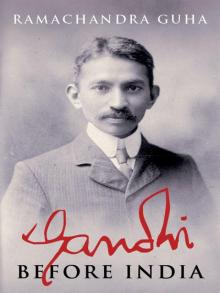 Gandhi Before India
Gandhi Before India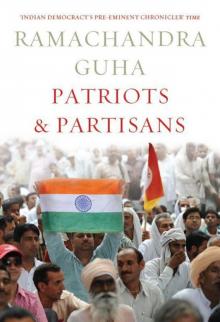 Patriots & Partisans
Patriots & Partisans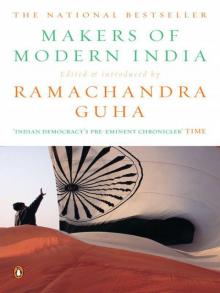 Makers of Modern India
Makers of Modern India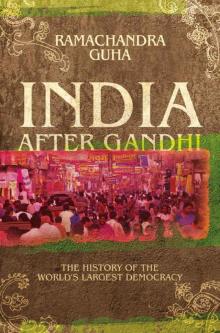 India After Gandhi: The History of the World's Largest Democracy
India After Gandhi: The History of the World's Largest Democracy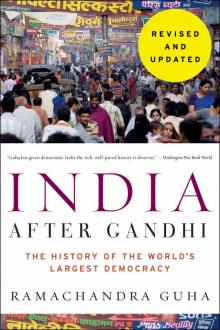 India After Gandhi Revised and Updated Edition
India After Gandhi Revised and Updated Edition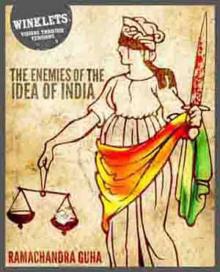 The Enemies of the Idea of India
The Enemies of the Idea of India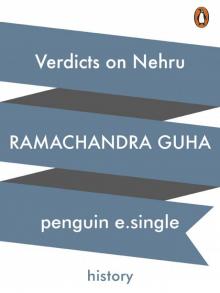 Verdicts on Nehru
Verdicts on Nehru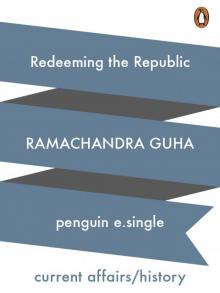 Redeeming the Republic
Redeeming the Republic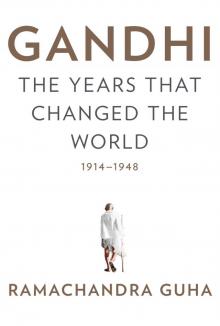 Gandhi
Gandhi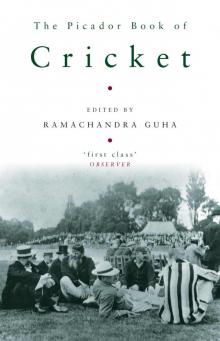 The Picador Book of Cricket
The Picador Book of Cricket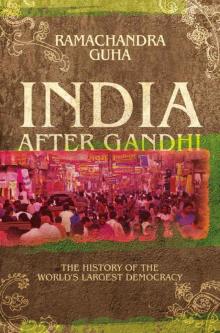 India After Gandhi
India After Gandhi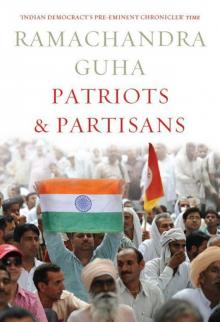 Patriots and Partisans: From Nehru to Hindutva and Beyond
Patriots and Partisans: From Nehru to Hindutva and Beyond